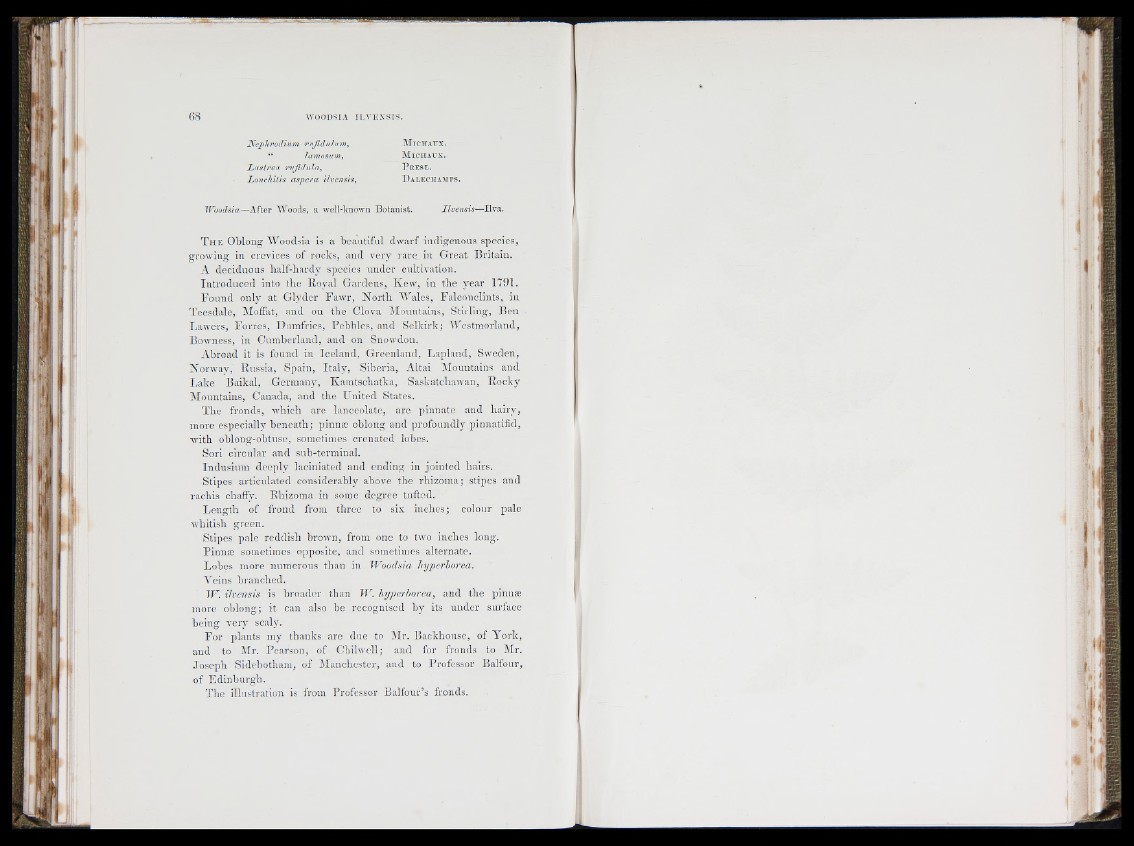
()8 WO O D S I A T l . V K X S I S .
'H
Xepln'odium ruftduhnn,
“ Jamosuni,
Lastrea rv fidaln,
LoncJiilis aspcra ilvensis,
M r c i iA r x .
Miciiaatx.
P r e s l .
D a l e c i i a m t s .
Woodsia—After Woods, a well-known Botanist. Ilv en sis—lira .
.'1
T h e Oblong Woodsia is a beautiful dwarf indigenous species,
growing in crevices of rocks, and very rare in Great Britain.
A deciduous lialf-hardy species under cultivation.
In troduced into the Royal Gardens, Kew, in the year 1791.
Fo u n d only at Glyder F awr, N o rth Wales, Falconclints, in
'L'eesdale, Moffat, and ou the Clova Mountains, Stirling, Ben
I.awers, Forres, Dumfries, Pebbles, and Selk irk ; Westmorland,
Bowness, in Cumberland, and on Snowdon.
Abroad it is found in Iceland, Greenland, Lapland, Sweden,
Norw'av, Russia, Spain, Ita ly , Siberia, Altai INIouutains and
Lake Baikal, Gerinanv, Kamtschatka, Saskatchawan, Rocky
Mountains, Canada, and the Ignited States.
The fronds, which are lanceolate, are pinnate and h a iry ,
more especially b eneath; jjinnæ ohlong and profoundly pinnatifid,
with oblong-obtuse, sometimes crcnated lobes.
Sori circular and sub-tcrmiual.
Indusium deeply laciniated and ending in jointed hairs.
Stipes articulated considerably above the rhizoma; stipes and
rachis cliaffv. Rhizoma in some degree tufted.
L en g th of frond from three to six inches; colour pale
whitish green.
Stipes ¡rale reddish brown, from one to two inches long.
Pinnæ sometimes opposite, and sometimes alternate.
Lobes more numerous than in Woodsia hyperhorea.
Veins branched.
W . i/rensis is broader than W . hyperhorea, and the pinnæ
more oblong; it can also be recognised h y its under sui'face
being very scaly.
F o r plants my thanks are due to Air. Backhouse, of Yo rk ,
and to (Mr. Pearson, of Chilwcll; and for fronds to i\Ir.
Joseph Sidebotham, of Manchester, and to Professor Balfour,
of E dinb u rg h .
Tlie illustration is from Professor Balfour’s fronds.